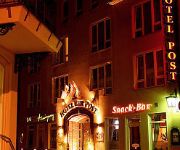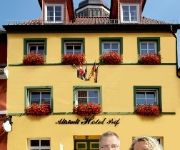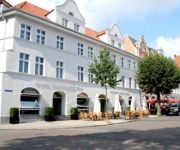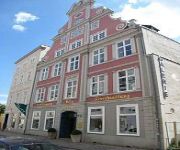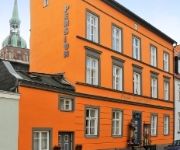Facts and Data
Webpages:
Official Unesco Page
German World Heritage Foundation
Hansestadt Stralsund (german only)
Hansestadt Wismar, Ihr Portal für Tourismus, Kultur und Wirtschaft in Mecklenburg-Vorpommern (german only)
Two Cities - One Heritage
UNESCO Commission of Germany
Basis Data:
Unesco World heritage since: 2002
Size of heritage: 168 ha
- Buffer zone: 448 ha
Coordinates:
Longitude: 13,085°
Latitude: 54,303°
Summary
The medieval towns of Wismar and Stralsund, on the Baltic coast of northern Germany, were major trading centres of the Hanseatic League in the 14th and 15th centuries. In the 17th and 18th centuries they became Swedish administrative and defensive centres for the German territories. They contributed to the development of the characteristic building types and techniques of Brick Gothic in the Baltic region, as exemplified in several important brick cathedrals, the Town Hall of Stralsund, and the series of houses for residential, commercial and crafts use, representing its evolution over several centuries.
Location on Map
Show bigger map on Openstreetmap
Historic Centres of Stralsund and Wismar
The Historic Centres of Stralsund and Wismar, located in the State of Mecklenburg-Western Pomerania (Mecklenburg-Vorpommern), Germany, are two remarkable examples of well-preserved medieval towns that played a significant role in the Hanseatic League. These UNESCO World Heritage sites are not only a testament to the region's rich history but also serve as living cultural landscapes that continue to thrive today.
History
The history of Stralsund and Wismar dates back to the 13th century when they were established as trading settlements. As members of the Hanseatic League, a powerful alliance of merchant guilds, these towns flourished as major trading hubs in the Baltic Sea region. The wealth accumulated through trade allowed for the construction of magnificent buildings and the development of a unique architectural style known as the Brick Gothic.
Throughout the centuries, Stralsund and Wismar faced numerous challenges, including wars, fires, and economic decline. However, their resilience and determination to preserve their cultural heritage have ensured their survival. Today, these towns stand as living witnesses to the past, offering visitors a glimpse into the medieval era.
Current State
The Historic Centres of Stralsund and Wismar have been meticulously preserved, allowing visitors to experience the charm and grandeur of the Hanseatic period. The towns' architectural ensemble, characterized by red-brick buildings, narrow streets, and spacious market squares, creates a unique atmosphere that transports visitors back in time.
Stralsund, situated on the Strelasund sound, boasts an impressive collection of Gothic buildings, including the iconic St. Mary's Church and the City Hall. The town's fortifications, which include the famous city wall and several gates, are remarkably intact. The Gorch Fock I, a historic sailing ship turned museum, is also a popular attraction in Stralsund.
Wismar, located on the Baltic Sea coast, is equally captivating. The Market Square, surrounded by stunning gabled houses, is the heart of the town. The Wasserkunst, an ornate Renaissance fountain, stands as a symbol of Wismar's prosperity. The St. George's Church and the Nikolaikirche are notable examples of the town's architectural treasures.
Both Stralsund and Wismar have undergone extensive restoration efforts to preserve their historic character. The towns have successfully balanced the preservation of their architectural heritage with modern development, ensuring that they remain vibrant and livable communities. The local governments, in collaboration with UNESCO, have implemented strict regulations to protect the towns' cultural and historical significance.
Today, the Historic Centres of Stralsund and Wismar attract visitors from around the world who come to admire their architectural splendor and immerse themselves in the rich history of the Hanseatic League. The towns' well-preserved medieval structures, combined with their lively cultural scenes and picturesque waterfronts, make them truly exceptional UNESCO World Heritage sites.
Hotels and places to stay
Altstadt zur Post
Altstadt Peiß Nichtraucherhotel
IntercityHotel
Schweriner Hof
Hotel am Jungfernstieg
Stralsund
Villa am Jungfernstieg
Haus Wullfcrona
Altstadt-Mönch Pension
Younior-Hotel Stralsund
Videos from the area
Videos provided by Youtube are under the copyright of their owners.

